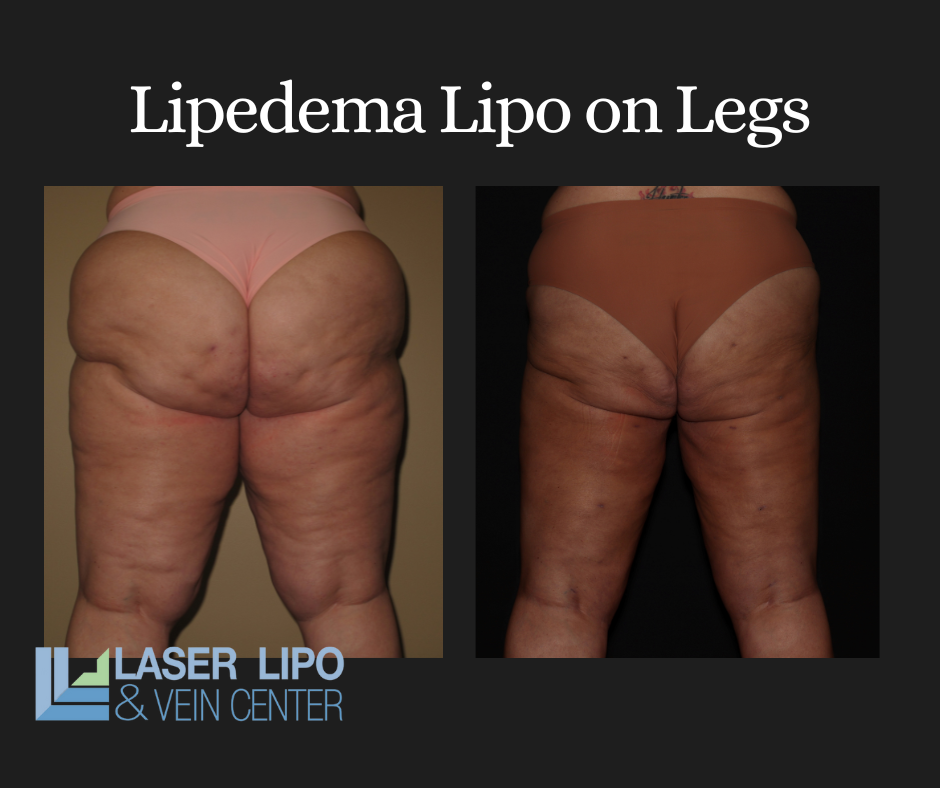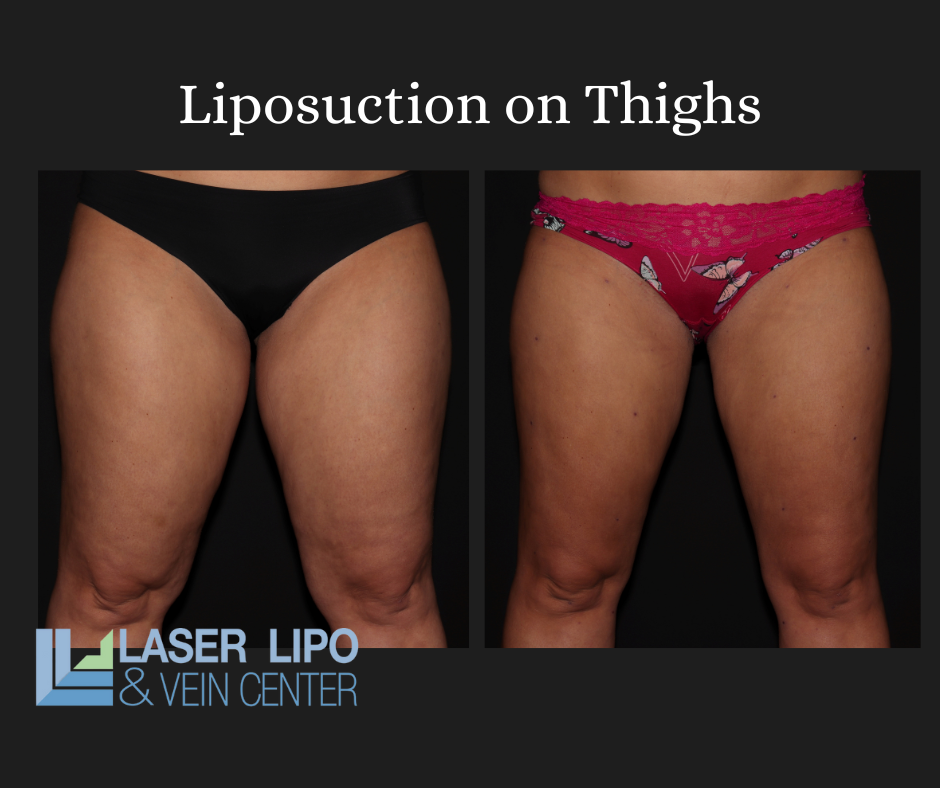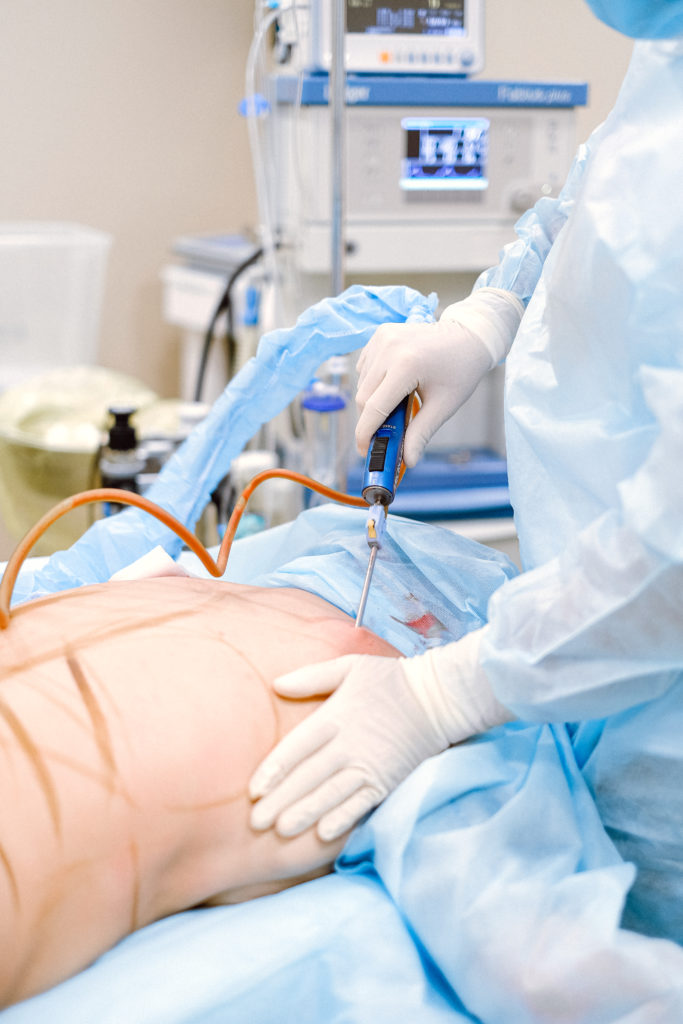

Lipedema, a chronic condition marked by the disproportionate accumulation of fat in the legs and arms, has perplexed and challenged the medical community for decades. Originating from the pioneering observations of Drs. Allen and Hines in 1940, the journey of lipedema treatment has evolved dramatically, from rudimentary recommendations of diet and compression stockings to groundbreaking surgical interventions. Dr. Wright’s upcoming talk with the Fat Disorders Resource Society (FDRS) from April 19-21 promises to shed light on this transformative journey and highlights the innovative strides in treating this often misunderstood disease.


Lipedema, characterized by pain, swelling, and an increased susceptibility to bruising, has long posed significant challenges in diagnosis and management. Traditional management strategies, while providing relief, often fell short of addressing the progressive nature of lipedema, leading many to live with unresolved pain and mobility issues. The condition’s overlap with lymphedema further complicated treatment approaches, necessitating a nuanced understanding of the lymphatic system’s involvement.
The 1990s marked a pivotal era in lipedema treatment. The introduction of the tumescent liposuction technique by Dr. Jeff Klein, which minimized blood loss and reduced surgical risks, set the stage for a new therapeutic approach. Dr Gerhard Sattler spent time with Dr Klein, bringing the new techniques to Germany. Dr. Gerhard Sattler’s pioneering efforts, alongside his colleagues, Drs. Stefan Rapprich and Manuel Cornely demonstrated the potential of liposuction in providing significant relief for lipedema patients. Despite early successes, concerns regarding potential lymphatic damage loomed, sparking heated debates within the medical community. The first abstract publication of the surgical reduction of lipedema was in 2002 from the Paris Dermatology Conference.
Lymphologists who focus on diagnosing and treating lymphedema were concerned with surgery for lipedema-causing lymphedema. Surgery, Trauma, and Radiation therapy can cause lymphedema. Lipedema women have an increased risk of developing lymphedema. The lymphologists who were treating lymphedema patients caused by liposuction and related surgeries were up in arms about the potential for lipedema surgery to cause more lymphedema. The controversy surrounding liposuction for lipedema underscored the need for meticulous technique and a deeper understanding of lymphatic anatomy. Studies conducted in the late 1990s and early 2000s meticulously examined the effects of liposuction on the lymphatic system, eventually paving the way for techniques that preserved lymphatic integrity while effectively reducing lipedema symptoms.
The Fat Disorders Resource Society (FDRS) has been instrumental in advancing the cause of individuals suffering from lipedema and related conditions. By fostering education, research, and advocacy, FDRS plays a critical role in raising awareness, improving patient outcomes, and supporting the development of effective treatments. Dr. Wright’s collaboration with FDRS underscores a shared commitment to enhancing the quality of life for those affected by fat disorders through education and innovative care.
The evolution of lipedema treatment through liposuction, particularly lymph-sparing techniques, represents a significant leap forward. Early adopters of these methods demonstrated remarkable improvements in symptoms, reduced need for ongoing conservative treatments, and a marked enhancement in patients’ quality of life. These findings, bolstered by subsequent studies, underscore liposuction’s role as a viable, long-term solution for managing lipedema.
Dr. Wright’s upcoming talk with FDRS is more than a historical overview of lipedema treatment; it’s a testament to the relentless pursuit of better outcomes for lipedema patients. By highlighting the journey from conservative management to surgical innovation, Dr. Wright emphasizes the importance of continued research, patient education, and multidisciplinary collaboration in tackling lipedema.
Through this dialogue, Dr. Wright and FDRS aim to empower patients and healthcare professionals alike, offering hope and direction in the ongoing battle against lipedema. The discussion will not only explore the milestones in lipedema treatment but also illuminate the path forward, emphasizing the necessity of accessibility to effective treatments and the ongoing need for advocacy and support.
As we anticipate Dr. Wright’s insightful presentation, it is crucial to recognize that the journey of lipedema care is far from complete. The collaboration between healthcare professionals and organizations like FDRS highlights the dynamic nature of lipedema research and treatment, underscoring the need for continued vigilance, innovation, and compassion in addressing this condition.
Armed with knowledge and support, Lipedema patients can navigate their treatment options with greater confidence, advocating for care that not only alleviates symptoms but also enhances their overall well-being. The dialogue between Dr. Wright and FDRS serves as a beacon of hope, driving home the message that significant strides in lipedema care are possible and within reach with perseverance and collaboration.
The history of treating lipedema is a narrative of challenge, innovation, and hope. Dr. Wright’s forthcoming talk with FDRS promises to be a profound exploration of this journey, shedding light on the milestones that have shaped lipedema care and the promising horizon of treatments. As we look forward to this event, let us rally behind the ongoing efforts to improve the lives of those affected by lipedema, inspired by the knowledge that together, we can make a difference. Through education, research, and advocacy, we can continue to push the boundaries of what is possible in lipedema treatment, ensuring that every individual has access to the care and support they deserve.
Dr. Wright’s innovative lipedema surgery techniques are transforming lives by improving mobility and enhancing the quality of life for patients. He will be conducting a video demonstration of his surgical techniques in a Master Class for Lipedema treatment at this year’s 1st Annual Lipedema World Congress. 

As a founding member of Lipedema World Alliance (LWA) and with expertise in this procedure, Dr. Wright will present the Tumescent Local Anesthesia (TLA) approach using power-assisted liposuction. In this course, he will describe his approach and techniques to give the best surgical outcomes and the greatest impact on mobility and quality of life long-term. His video demonstration and Master Class will be conducted on October 4, 2023, in Potsdam, Germany, with international participants from Spain, Italy, Austria, Germany, Norway, Lithuania, Sweden, Australia, India, Argentina, Brazil, USA, Iceland, Denmark, and Turkey. Below, we outline the topics and steps Dr. Wright will discuss.
Patients must first implement an anti-inflammatory diet and compression therapy. Their diets should emphasize low-refined carbs and avoiding processed foods, and medical-grade compression optimizes lymphatic function and tissue inflammation. These combined measures can decrease limb size, decrease pain, and lead to softening of the lipedema tissue ahead of surgery.
Before lipedema surgery, using high-frequency Ultrasound, the greater and smaller saphenous veins are mapped, and adjacent principal lymphatic collecting ducts are located. The watershed area around the principal superficial lymphatics in the legs is approached with extra care during surgery.
Tumescent fluid helps protect vascular and lymph vessels from injury, so the surgical area must be completely tumescent. Dr. Wright was trained in the Tumescent Technique by its inventor, Dr. Jeffery Klien. He follows The Klein Method and Dosing. General anesthesia adds the risk of general anesthetic medication. It can also lead to areas of inadequate tumescence because the general anesthesia blocks the ability to find areas that were incompletely tumescent.
Dr. Wright uses small (3mm) blunt cannulas to remove as much lipedema-affected adipose tissue as possible. This process works to debulk the area using longitudinal techniques.
The cannula is directed in longitudinal strokes, especially in the areas marked with lymphatic collectors, so it allows transecting of the lymphatic vessels. This requires frequent position changes, sometimes 8-12 different patient re-positions, to ensure he can remove the tissue using longitudinal cannula strokes.
After as much lipedema-affected tissue as possible has been removed with the suction cannula, he feels and massages the affected areas to check for any remaining fibrous lipedema nodules. If lipedema nodules are still present, then we manually loosen the nodules. If necessary, we manually extract them with an additional puncture of incision.
The patient is then placed in medical-grade compression to be worn for 24 hours a day for the first month.
Early-stage Lipedema (Stage 1) has small nodules the size of small seeds or peas, which often appear pearl-size. Middle-stage Lipedema (Stage 2) has larger nodules that feel the size of walnuts or gumballs. The presence of lobules characterizes the later stage, Lipedema (Stage 3). The nodules in Stage may be the same size as those in Stage 2, or they may be larger up to the size of a plum.
In the earlier stages of Lipedema (Stage 1 and most patients in Stage 2), the subcutaneous nodules are removed with lipedema reduction surgery, which involves modification of cosmetic liposuction using tools and techniques that minimize harm to the lymphatics. In lipedema patients with larger or more adherent nodules, the nodules have to be manually extracted.
In these cases, a small incision is made over the nodules that resist removal with a suction cannula and are gently milked out of the skin. Surgeons don’t want to cause any more trauma than is absolutely necessary. However, there are instances where this method is the only way to get larger, more adherent nodules removed. Dr. Wright has several videos of the extraction process you can view here.
The procedure typically takes several hours to complete, depending on the extent of the lipedema.
Patients may experience some discomfort and swelling in the days following the procedure, but this can be managed with pain medication and other treatments.
Most patients can return to work and other activities within a week or two, although this may vary depending on the extent of the liposuction and individual healing rates.
By reducing the amount of subcutaneous fat tissue, you can reduce any pain associated with lipedema. Lipedema reduction surgery, sometimes called Lymph sparing liposuction, will help you increase mobility without having the pain you have been feeling with lipedema since it started. This is huge for women with lipedema, especially because the pain and bruising is the leading symptom of seeking treatment. Women report a significant improvement in their ability to move around more freely, exercise more regularly, and enjoy day-to-day activities that were previously off-limits. Bumping into a chair or a corner no longer causes large bruises, playing with the family dog doesn’t cause pain when they jump, and everyday activities are no longer considered out of reach.


Have you ever heard of lipedema? It’s a condition that affects millions of women worldwide. It causes an abnormal buildup of fat cells in the legs, buttocks, and hips, which can lead to pain, discomfort, and even disability. While there are several treatment options available, liposuction has become a popular choice among patients. However, not all liposuction procedures are the same. In fact, there are two distinct types of liposuction that are often confused: lipedema liposuction and cosmetic liposuction.
Understanding the key differences between these two procedures is essential for anyone considering liposuction for lipedema or cosmetic purposes. In this article, we’ll take a closer look at lipedema liposuction and cosmetic liposuction and explain what sets them apart. So, whether you’re a patient or a healthcare provider, keep reading to discover the crucial distinctions between these two types of lipo.
Lipedema is a chronic condition that affects mainly women, although it can occur in men as well. It’s characterized by an abnormal accumulation of fat and fibrous tissue in the legs, hips, and buttocks, which can cause pain, swelling, and tenderness. Lipedema is often misdiagnosed as obesity, lymphedema, or cellulite and can be a source of emotional and physical distress for those affected. As it progresses, Lipedmea can cause impairment in lymphatic function in the affected areas. There’s no cure for lipedema, but several treatment options are available, including liposuction.


Lipedema liposuction is a specialized type designed to address the unique needs of lipedema patients. Unlike traditional cosmetic liposuction, which focuses on removing excess fat for aesthetic purposes, lipedema liposuction aims to reduce pain, improve mobility, and prevent further progression of the condition. Lipedema liposuction requires generous tumescent anesthesia and involves making small incisions in the affected areas. The surgeon then uses a specialized cannula to remove the excess fat cells while preserving the healthy tissue. The procedure can take several hours, depending on the extent of the lipedema.
One of the key differences between lipedema liposuction and cosmetic liposuction is that lipedema liposuction is the extra surgical technique used to protect the lymphatics, sometimes called “lymph sparing.” It also may require multiple sessions to achieve optimal results. Lipedema is a chronic condition that can’t be cured with a single procedure. Lipedema patients may also require ongoing maintenance sessions to prevent further progression. Often Lipedema Lymph Sparing liposuction is combined with Manual Extraction of the fibrous nodules caused by the lipedema disease.


Cosmetic liposuction, also known as traditional liposuction, is a popular cosmetic procedure that’s designed to remove excess fat cells from various areas of the body, including the abdomen, thighs, and arms. Unlike lipedema liposuction, which is performed for medical reasons, cosmetic liposuction is performed for aesthetic purposes only.
While lipedema liposuction and cosmetic liposuction are both forms of liposuction, there are several key differences between the two procedures. Some of the most significant differences include the following:
Like any surgical procedure, lipedema liposuction and cosmetic liposuction carry some risks and side effects. Some of the most common risks and side effects include:


Recovery time and results can vary depending on the extent of the procedure and the patient’s individual health status. In general, patients can expect to experience some discomfort and swelling for several weeks after the procedure.
Patients undergoing lipedema liposuction may require compression garments and lymphatic massage to reduce swelling and promote healing. They may also need to avoid strenuous exercise and other activities for several weeks after the procedure.
Patients undergoing cosmetic liposuction can typically resume normal activities within a few days of the procedure. They may need to wear compression garments for several weeks to reduce swelling and promote healing.
Results from both procedures can be long-lasting, although patients need to maintain a healthy lifestyle to prevent further weight gain and the progression of lipedema.
Lipedema liposuction is typically recommended for patients with advanced lipedema who have not responded to other treatments, such as compression therapy and diet modifications. Candidates for lipedema liposuction should be in good overall health and have realistic expectations of the procedure.
Cosmetic liposuction is typically recommended for patients who are at or near their ideal weight but have stubborn areas of fat that are resistant to diet and exercise. Candidates for cosmetic liposuction should be in good overall health and have realistic expectations of the procedure.
Choosing the right surgeon for lipedema liposuction or cosmetic liposuction is crucial for achieving the best possible results. Patients should look for a surgeon who has experience in performing the procedure, a proven track record of patient outcomes, and a good reputation in the community. Lipedema is a disease that requires specialized knowledge and comprehensive treatment, including dietary counseling and medical-grade compression to optimize lymphatic function. Pre and post-surgery treatment are focused on lowering tissue inflammation and controlling the disease comprehensively for the best results.
Many plastic surgeons approach lipedema reduction surgery as an isolated surgical procedure and need to treat lipedema comprehensively, which can result in suboptimal results or recurrence of symptoms. It is highly recommended to choose a surgeon who treats lipedema disease comprehensively. Patients should seek a surgeon who diagnoses the disease and starts conservative treatment first. A surgeon who treats comprehensively will ensure conservative treatment has been optimized, as proceeding with surgery when inflammation is elevated can actually worsen the disease course. Once the proper overall treatment plan has been implemented, the surgeon should take the time to explain the procedure and answer any questions the patient may have.
The cost of lipedema liposuction and cosmetic liposuction can vary depending on several factors, including the extent of the procedure, the surgeon’s experience, and the geographic location.
Lipedema liposuction can be more expensive than cosmetic liposuction due to the specialized technique and multiple sessions required. Patients should check with their insurance provider to see if the procedure is covered under their policy.
Lipedema liposuction and cosmetic liposuction are two distinct types of liposuction that are often confused. While both procedures involve the removal of excess fat cells, they have different purposes, approaches, and techniques. Understanding the key differences between lipedema liposuction and cosmetic liposuction is crucial for anyone considering liposuction for medical or cosmetic reasons. Patients should consult with a board-certified surgeon to determine which procedure is right for them and to achieve the best possible results.
Lipedema is a life-changing disease that can greatly impact everyday life. Seeking out treatment is a big ordeal, and with each treatment option available there are certain risks that must be reviewed. Liposuction is typically a safe and effective procedure when performed by trained hands and additional precautions are followed. Current technology allows properly trained vascular, cosmetic plastic surgeons to remove the subcutaneous fat tissue safely and greatly reduce the impact lipedema has on your mobility as long as specialized surgical techniques are followed which limit injury to lymphatics. However, as with any surgical procedure, there is always a certain amount of lipo risks involved. While most risks can be reduced, some are a one in a million chance. Recently, a woman in the United Kingdom experienced firsthand how difficult the most severe and rare risks can impact her life even further.
Jayney Nascimento, an English woman living in England, recently received liposuction treatment for lipedema. She had experienced the condition for 12 years and was self-conscious about how much bigger her legs were than the rest of her body. Like other individuals with lipedema, she sought out liposuction in the hope of being confident enough to wear a bathing suit again. The procedure went smoothly, and no complications were noted.
Jayney returned home immediately following her procedure to relax and recover from the procedure. After a few days, she began to experience coldness in her legs and excruciating pain. Since Jayney believed it was a side effect of the medication, she did not seek out her doctor until she was taken to the hospital by her daughter. Jayney ending up catching necrotizing fasciitis, a common bacterium that can cause serious but rare infections. This bug can spread in a few short hours and can be life-threatening if not caught early enough. While Jayney is fortunate enough to not have to amputate her legs, she now has significant scarring all across her legs.
Making sure you have a highly trained physician should always be a top priority. Jayney’s condition may have been caused due to an unclean environment for her procedure, a significant injury to an important lymphatic structure or having a poorly trained physician complete the procedure. An individual with lipedema will have increased strain on their lymphatics and are at increased risk for lymphatic injury. Lipedema liposuction requires significant care to not injure lymphatics that only a highly trained individual should be trusted with. Make sure to ask your physician what their experience with lipedema liposuction is and what kind of side effects their patients have experienced in the past. Liposuction always has associated risks, but they can be reduced when you rely on the most trusted individuals in the field.
To read more about this story, please click here.
Dercum‘s disease, also known as Adiposis Dolorosa, is a rare condition that is characterized by multiple, painful fatty lipomas (benign, fatty tumors). It occurs in men and women but is more common in post-menopausal women. The lipomas are located primarily in the subcutaneous tissue. They can occur almost anywhere but often occur on the arms near elbow, legs near the knee and the trunk. Unlike ordinary lipomas, there is also pain that can be severe and sometimes debilitating. It is a chronic condition, meaning that it is a long-lasting condition that is often progressive.
Currently there are very few treatments for Dercum’s Disease. The only effective treatments for painful lipomas at present are surgical options such open excision and liposuction. The current treatments, although they can be effective, have drawbacks which limit their use more broadly. Open surgical excision of painful lipomas is unusually incomplete, and it can lead to scarring which has a potential to create more lipomas. Open surgical excision is time-consuming if multiple lipomas are removed and it leaves a visible scar. Liposuction can be expensive and is generally not covered by medical insurance. Although Liposuction can treat a larger area at one time, it also takes a good deal of time and does not completely remove all of the lipomas.
Raziel Therapeutics recently received the go ahead to investigate the possible treatment Dercum‘s disease with a new drug at this time designated RZL-012 as an orphan drug.